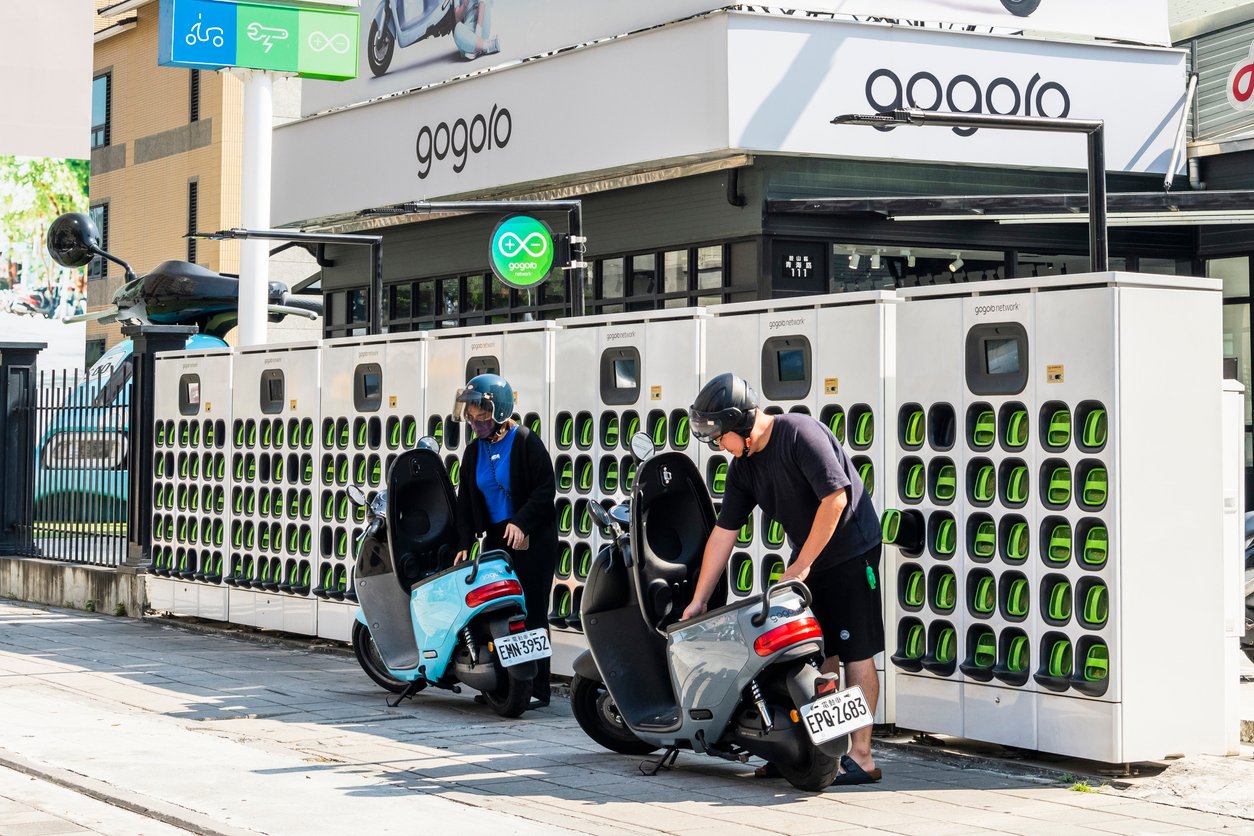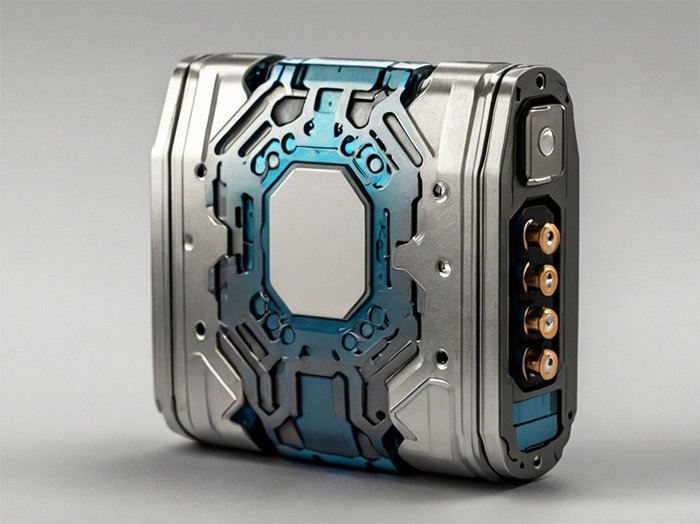
Electrifying Opportunity or Shocking Setback? Troubled times for a Battery-Swapping Pioneer
The sudden resignation of the company’s charismatic founder and CEO, coupled with allegations of potential subsidy fraud, has cast a shadow over what was once seen as a shining example of sustainable transportation innovation. As the dust settles, the question remains: Is this a momentary stumble for a company on the cusp of transforming urban mobility, or does it signal fundamental flaws in their business model?
To answer this question, we need to take a deep dive into the company’s history, its unique value proposition, and the massive market potential it aims to capture. Let’s explore how this battery-swapping innovator is positioning itself to electrify the future of transportation, particularly in the bustling cities of Southeast Asia where two-wheeled vehicles reign supreme.
The Electric Two-Wheeler Revolution: A Market Ripe for Disruption
In many parts of the world, particularly in Southeast Asia, two-wheeled vehicles are not just a convenience – they’re a way of life. Take India, for example, where a staggering 47% of households own a scooter or motorcycle. For millions of people, these nimble vehicles serve as the primary mode of transportation, weaving through congested city streets and navigating narrow alleyways with ease.
This ubiquity of two-wheelers presents both a challenge and an enormous opportunity. On one hand, the sheer number of gas-powered scooters and motorcycles contributes significantly to air pollution and carbon emissions in densely populated urban areas. On the other hand, it represents a massive market ripe for electrification – one that could dramatically reduce emissions and improve air quality if converted to clean, electric power.
Enter Gogoro, the Taiwanese company at the forefront of this potential revolution. Founded in 2011 by Horace Luke and Matt Taylor, Gogoro has developed a unique approach to electric two-wheeled mobility that aims to overcome the primary obstacles preventing widespread EV adoption: range anxiety and long charging times.
Gogoro’s Innovative Approach: Swappable Batteries and Smart Stations
At the heart of Gogoro’s strategy is its battery-swapping system. Instead of relying on traditional charging infrastructure, Gogoro has created a network of automated battery-swapping stations called GoStations. Here’s how it works:
- Electric Scooters: Gogoro produces sleek, high-performance electric scooters designed to integrate seamlessly with their battery-swapping ecosystem.
- Swappable Batteries: The scooters are powered by removable, standardized battery packs that can be easily swapped out when depleted.
- GoStations: A network of automated battery-swapping stations is strategically placed throughout urban areas. When a rider’s battery is running low, they can simply pull up to a GoStation and swap their depleted battery for a fully charged one in a matter of seconds.
- Smart Technology: The entire system is connected and optimized through smart technology, allowing for real-time monitoring of battery levels, station availability, and user data.
This innovative approach offers several key advantages:
- Eliminates Range Anxiety: Riders no longer need to worry about running out of power, as a fully charged battery is always just a quick swap away.
- Convenience: Swapping a battery takes mere seconds, compared to the hours required for traditional EV charging.
- Infrastructure Efficiency: Battery-swapping stations can serve many more vehicles in a given time period compared to traditional charging stations.
- Reduced Battery Degradation: By managing the charging and maintenance of batteries centrally, Gogoro can optimize battery life and performance.
A Massive Market Opportunity
The potential market for electric two-wheelers, particularly in Southeast Asia, is enormous. Let’s look at some key statistics:
- In Vietnam, there are an estimated 45 million motorcycles on the road, with around 3 million new ones sold each year.
- Indonesia, the world’s third-largest two-wheeler market, sees annual sales of around 6.5 million units.
- In India, the world’s largest two-wheeler market, over 21 million units were sold in the 2018-2019 fiscal year.
These numbers paint a picture of a massive addressable market for companies that can successfully offer compelling electric alternatives to traditional gas-powered scooters and motorcycles. Gogoro, with its innovative battery-swapping system, is well-positioned to capture a significant share of this market – but they’re not alone in recognizing this opportunity.
Competitive Landscape: A Race to Electrify Southeast Asia
While Gogoro may have pioneered the battery-swapping model for electric two-wheelers, they face increasing competition as other players enter the market:
- Traditional Manufacturers: Established two-wheeler brands like Honda, Yamaha, and Hero MotoCorp are all investing heavily in electric models, leveraging their existing manufacturing capabilities and brand recognition.
- EV Startups: New companies focused exclusively on electric two-wheelers are emerging, such as Ola Electric in India, which has ambitious plans for large-scale manufacturing.
- Battery Technology Companies: Firms specializing in battery technology, like Taiwan’s Kymco with its Ionex system, are developing their own swappable battery ecosystems.
- Ride-Hailing Giants: Companies like Grab and Gojek in Southeast Asia are exploring electric two-wheeler options for their vast networks of delivery drivers and ride-hailing partners.
This competitive landscape highlights both the enormous potential of the market and the challenges Gogoro faces in establishing itself as the dominant player. To succeed, they’ll need to leverage their first-mover advantage, continue innovating, and forge strategic partnerships to expand their reach.
Gogoro’s Growth Strategy and Recent Challenges
Gogoro has been aggressively pursuing expansion, both within its home market of Taiwan and internationally. Some key elements of their growth strategy include:
- Expanding the GoStation Network: Continuously increasing the number and coverage of battery-swapping stations to improve convenience for users.
- Partnerships with OEMs: Collaborating with other vehicle manufacturers to integrate Gogoro’s battery-swapping technology into their electric scooters, expanding the ecosystem.
- International Expansion: Entering new markets through partnerships and pilot programs, with a focus on densely populated urban areas in Southeast Asia.
- Diversification: Exploring additional applications for their battery-swapping technology, such as smart cities and energy storage solutions.
However, recent events have cast a shadow over Gogoro’s growth trajectory. The sudden resignation of CEO and co-founder Horace Luke, coupled with allegations of potential subsidy fraud related to component sourcing, has raised concerns about the company’s internal practices and financial stability.
These developments come at a time when Gogoro has been experiencing growing financial losses, despite expanding its user base and battery-swapping network. The company’s stock price has taken a hit, leaving investors wondering whether this represents a buying opportunity or a warning sign.
The Road Ahead: Opportunity or Caution?
As we assess Gogoro’s position and potential, several factors come into play:
Pros:
- Innovative Technology: Gogoro’s battery-swapping system offers a unique solution to key EV adoption barriers.
- First-Mover Advantage: They have already established a significant presence in Taiwan and are expanding internationally.
- Partnerships: Collaborations with major OEMs and energy companies provide avenues for growth.
- Market Potential: The Southeast Asian two-wheeler market represents an enormous opportunity for electrification.
Cons:
- Financial Losses: Growing losses raise questions about the long-term viability of the business model.
- Leadership Uncertainty: The sudden departure of the CEO could impact strategic direction and investor confidence.
- Regulatory Scrutiny: Allegations of subsidy fraud may lead to increased oversight and potential fines.
- Intense Competition: Other players are rapidly entering the electric two-wheeler market with their own innovative solutions.
Conclusion: A Pivotal Moment for Gogoro and Electric Mobility
Gogoro stands at a crossroads. On one hand, their innovative technology and early market position give them a significant advantage in the race to electrify two-wheeled transportation in Southeast Asia and beyond. The potential market is enormous, and successful execution could position Gogoro as a dominant player in sustainable urban mobility.
On the other hand, recent setbacks have exposed vulnerabilities in the company’s operations and raised questions about its financial stability. The loss of a visionary leader and potential regulatory issues could hinder Gogoro’s ability to capitalize on its early lead.
For investors, this situation presents both opportunity and risk. Those who believe in the long-term potential of battery swapping and Gogoro’s ability to overcome its current challenges may see the recent stock price decline as a chance to invest in a company poised for future growth. More cautious observers may prefer to wait and see how Gogoro addresses its internal issues and navigates the increasingly competitive landscape.
Ultimately, Gogoro’s success will depend on its ability to scale its operations profitably, maintain its technological edge, and effectively expand into new markets. The company’s response to its current challenges will be crucial in determining whether it can fulfill its promise of revolutionizing urban mobility or whether it will be overtaken by competitors in this rapidly evolving industry.
As the electric mobility revolution accelerates, all eyes will be on Gogoro to see if it can overcome its recent setbacks and emerge as a true leader in sustainable transportation. The next few months will be critical in shaping the company’s future – and potentially the future of urban mobility itself.
What do you think of Gogoro as an investment opportunity? Leave your comments down below!
Discover more from Renewable Riches
Subscribe to get the latest posts sent to your email.



